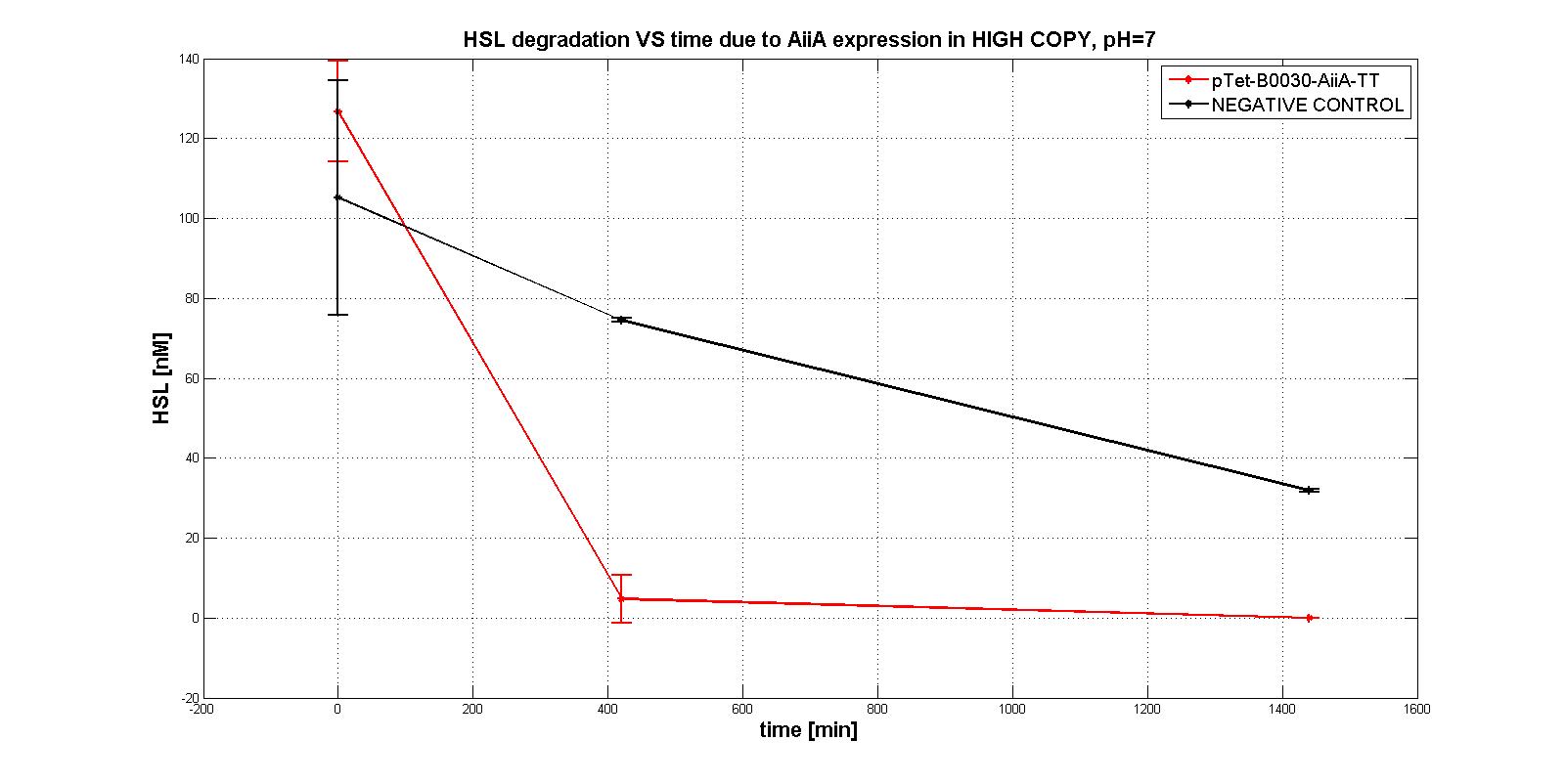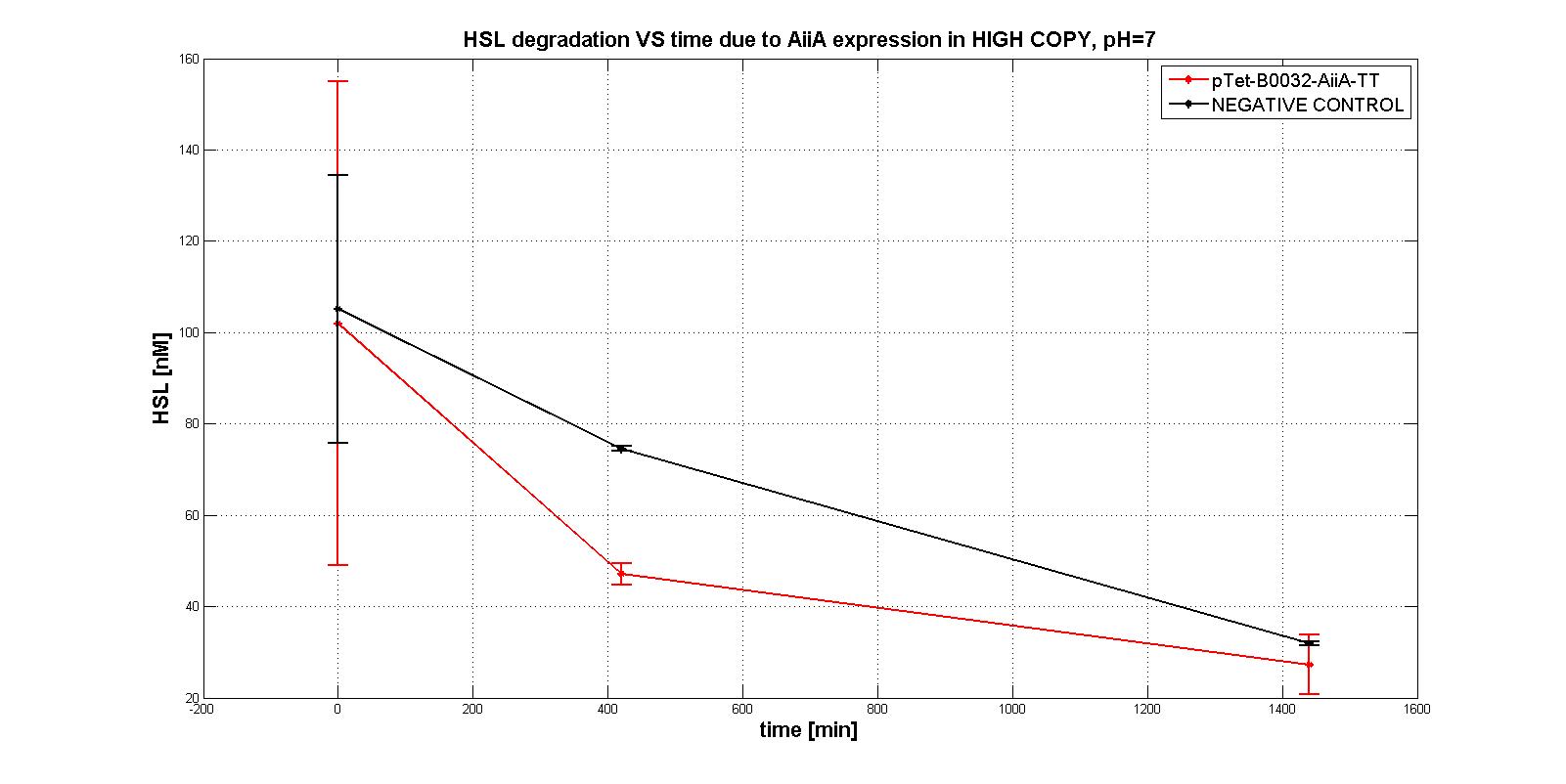|
|
| (5 intermediate revisions by the same user not shown) |
| Line 3: |
Line 3: |
| | how you used this part and how it worked out. | | how you used this part and how it worked out. |
| | | | |
| − | ===Characterization of BBa_C0060 by Tec-Chihuahua 2017===
| |
| − |
| |
| − | One of the fundamental Biobrick® of Erwinions is the aiiA gene, it codifies for an enzyme that catalyzes the degradation of N-Acyl homoserine lactones, which are quorum sensing autoinducers. The part was published on iGEM's Parts Registry in 2013, but up until now, it's not known whether this gene can be expressed in <i>Erwinia amylovora</i> or not. Two types of aiiA were used in this project: the one published in iGEM's catalog, and the one that we synthesized thanks to sponsorship granted by IDT®. The sequence of the first mentioned is reported as being putative, while the latter's confirmed to codify for our protein of interest; nonetheless, no information is known about the expression of either in <i>Erwinia amylovora</i>. The contribution of this characterization to the existing part (BBa_C0060) as a bronze requisite is supported by the work done with it within the project. In the end, it was concluded that our composite BioBrick® (BBa_K2471000) that was created in order to express the Registry's aiiA, successfully works in <i>Erwinia amylovora</i>.
| |
| − |
| |
| − | The characterization of BBa_C0060 was carried out, first, by creating a composite part (BBa_K2471000) capable of expressing the biopart of interest; this was done by the addition of a T7 promoter and RBS (BBa_K525998) and a T1 terminator (BBa_B0010) to the basic part. The design was first done in silico utilizing SnapGene®, where the program indicated that the plasmid would have a length of 3,010 base pairs. After verifying the feasibility of creating this BioBrick®, the part was synthesized using the 3A assembly method. Agarose gel (1%) electrophoresis was performed to corroborate that the obtained molecular weight coincided with the expected one.
| |
| − |
| |
| − | <center><img src="https://static.igem.org/mediawiki/2017/4/45/T--Tec-Chihuahua--Snap_1.png" width="300" ></center>
| |
| − | <center><div class="row">
| |
| − | <div class="col-md-8">
| |
| − | <sub><b>Figure 1. </b>(A) SnapGene® map of BBa_K2471000. (B) Agarose gel (1%) electrophoresis of BBa_K2471000 compared with NEB Quick-Load® Purple 2-Log DNA Ladder (0.1 - 10.0 kb), where the highlighted bands correspond to approximately 3,000 base pairs.</sub>
| |
| − | </div><br><br>
| |
| | | | |
| | ===Applications of BBa_C0060=== | | ===Applications of BBa_C0060=== |
Latest revision as of 21:31, 1 November 2017
This experience page is provided so that any user may enter their experience using this part.
Please enter
how you used this part and how it worked out.
Applications of BBa_C0060
User Reviews
UNIQ9b12ebf3cac74a23-partinfo-00000000-QINU
|
•••••
UNIPV-Pavia iGEM 2011
|
NB: unless differently specified, all tests were performed in E. coli MGZ1 in M9 supplemented medium at 37°C in low copy plasmid pSB4C5.
The AiiA enzyme activity has been characterized under the regulation of ptet promoter, assaying its enzymatic activity, with these parts:
A system of differential equations has been derived and parameters would have been identified, studying the exponential growth phase:
The four measurment parts ptet-RBSx-LuxI were quantitatively characetrized using the BBa_T9002 biosensor. Unfortunately the model parameters (kcat, kM,AiiA) were not estimated because placing the device in low copy plasmid (pSB4C5)resulted in no HSL degradation, as shown in the figures below:
A semi-quantitative information about AiiA enzyme activity is given, performing an experiment in E. coli TOP10, with the four measurement devices in pSB1A2; the results are summerized in the graphs below:
In this way a measure of AiiA activity is given, as the percentage of HSL degraded in 7 hours (measurements provided as average [stdandard deviation]):
| Measurement device | HSL degraded percentage |
| BBa_K516220 | 96.11 [3.66] |
| BBa_K516221 | 77.60 [2.66] |
| BBa_K516222 | 50.66 [16.87] |
| BBa_K516224 | 100 [0] |
In order to evaluate the RBSs efficiency, the ratio between the percentage of the degraded HSL realtive to the measurement device with the standard RBS (BBa_B0034) was computed:
| RBS | RBS efficiency |
| BBa_B0030 | 0.96 |
| BBa_B0031 | 0.78 |
| BBa_B0032 | 0.51 |
| BBa_B0034 | 1 |
|
UNIQ9b12ebf3cac74a23-partinfo-00000003-QINU









